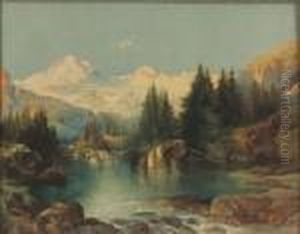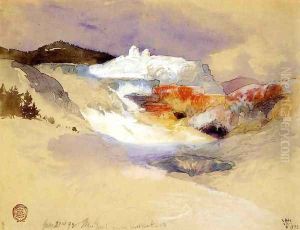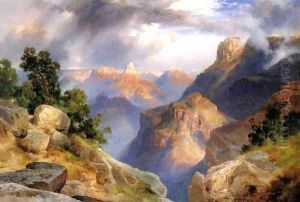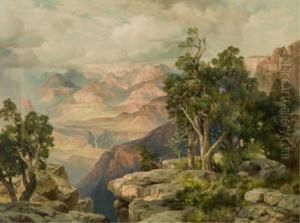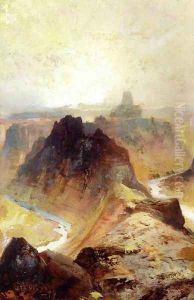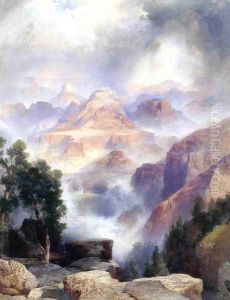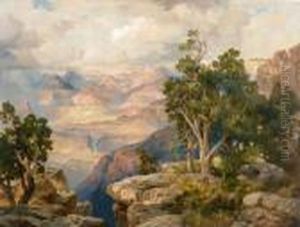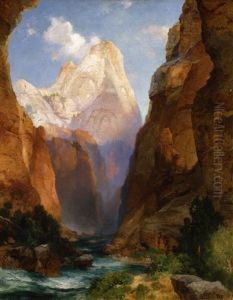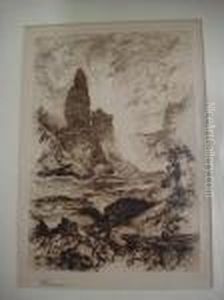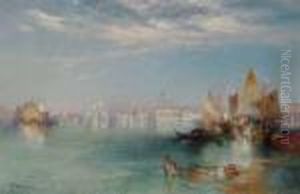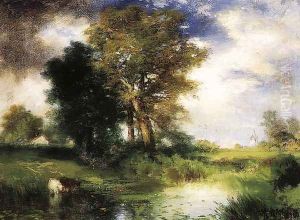Thomas Moran Paintings
Thomas Moran was an American painter and printmaker of the Hudson River School in New York whose work often featured the Rocky Mountains. Moran and his family immigrated to America from Bolton, England, in 1844, when he was seven years old. They settled in Philadelphia, where Moran was apprenticed to a wood engraving firm and began his career as an illustrator. In the 1860s, Moran was introduced to the work of British landscape painter J.M.W. Turner, which had a profound influence on his style, leading to his use of vivid color and dramatic light effects.
Moran's career took a significant turn when he joined a government survey expedition to the Yellowstone region in 1871. The sketches and paintings he created from this expedition were instrumental in convincing the United States Congress to establish Yellowstone as the country's first national park. His work, including his famous painting 'The Grand Canyon of the Yellowstone', was celebrated for its dramatic representation of the American West.
Throughout his career, Moran continued to paint the American landscape, becoming a central figure in the establishment of American national identity through art. His paintings contributed to the myth of the West as a land of romance and natural grandeur. Moran's vision of the Western landscape was of a pristine wilderness, which was a popular sentiment in the late 19th century that helped spur the conservation movement in the United States.
Moran was a prolific artist, and his works include not only landscapes but also marine paintings and etchings. He was a skilled colorist, and his use of light and color helped to create captivating images that were critical in shaping the perception of the American West. His legacy is preserved in the numerous paintings and prints that are housed in museums across the United States, including the Smithsonian American Art Museum, the Metropolitan Museum of Art, and the National Gallery of Art.
Moran's influence extended beyond his paintings. He inspired future generations of artists with his depiction of the American landscape's majesty. He was a member of the National Academy of Design and the American Watercolor Society. By the time of his death in Santa Barbara, California, on August 25, 1926, Moran had become a towering figure in American art, known as 'the dean of American landscape painters.' His work remains a vital part of the country's artistic heritage, capturing the awe-inspiring beauty of the American wilderness that was rapidly changing with the advance of the frontier.







